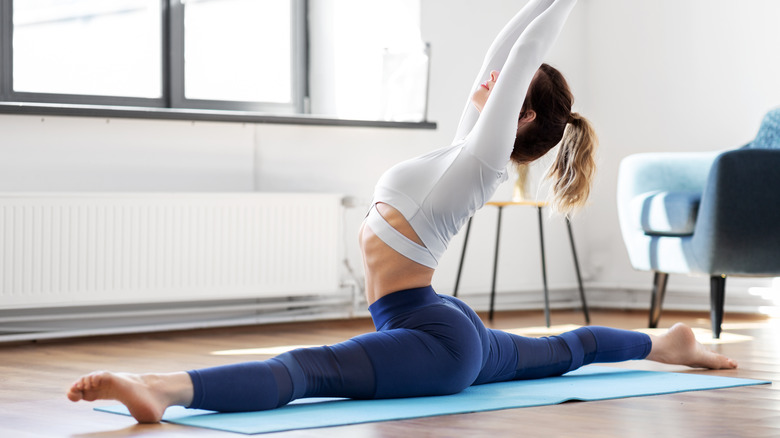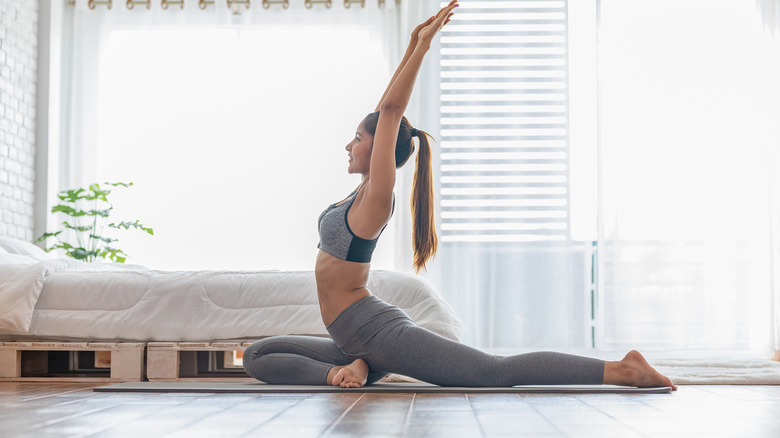The Real Reason Not Everyone Can Do The Splits
People who can do splits are generally seen as very athletic, and for good reason. The ability to spread your legs so the whole length of them touches the floor is an impressive feat, but it's more than a cool move to show off to friends. It requires a lot of dedicated practice, plus flexibility and mobility, to pull off the splits, according to LIVESTRONG.
Flexibility is important for a healthy life, in general. "Many exercise physiologists agree that having an optimal joint range of motion can lower your risk of injury and increase your quality of life," Rachelle Reed, barre kinesiologist, told Women's Health Magazine. Trying to do a split is a good goal that has the added benefit of improving your mobility and preventing injury. However, there is a reason why not everyone can drop to the floor and accomplish one.
The splits requires flexible hips, inner thighs, and hamstrings
In order to manage a split, your hip flexors, inner thighs, and hamstring need to be flexible, according to LIVESTRONG. Smaller muscles are involved too, but if you can become flexible in these three main areas then you will be well on your way to doing the splits. It's important not to force the stretches, however. Pushing muscles past their stretching limit will lead to injuries (per Healthline).
Stiff hips are a common problem. Unfortunately, too many people have tightness in their hip muscles from a sedentary lifestyle, such as sitting at a desk all day. Having inflexible hip flexors means that your splits can only go to a certain point (via LIVESTRONG). One targeted stretch to practice is the pigeon pose, a common stretch in yoga and athletics. According to Healthline, it has the added benefit of stretching your lower back.
Tight inner thighs and hamstrings can also prevent progress in doing the splits. Stiff hamstrings can pull your pelvis out of its normal position, limiting flexibility, and tight inner thighs can cause groin injuries (via LIVESTRONG). Two great stretches to loosen these muscles are the seated forward bend and bound angle pose (also called butterfly stretch), per Yoga Journal.


